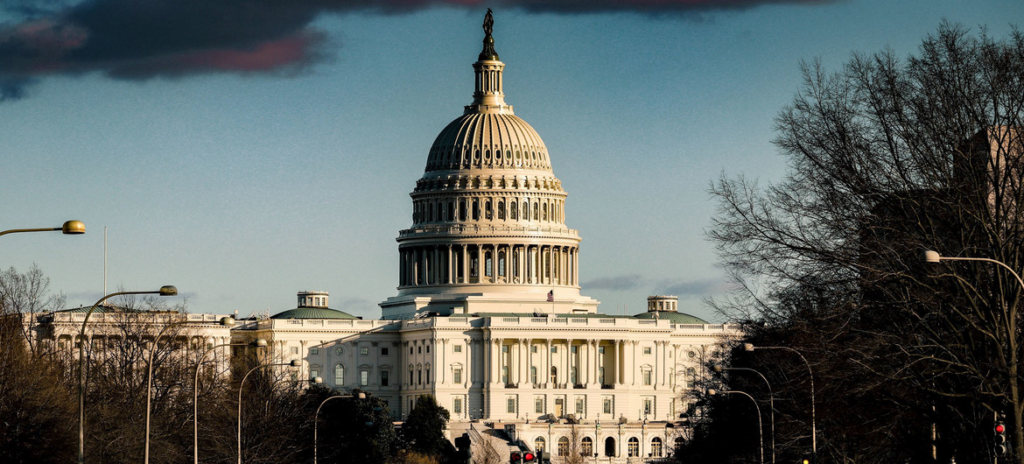Build Back Better and voting rights legislation are stalled in the Senate, and filibuster reform is top of mind again in Washington.
In a speech on Tuesday, President Biden said that passing national voting legislation is so essential that if a compromise can’t be struck, “we have no option but to change the Senate rules, including getting rid of the filibuster.” Senate Majority Leader Chuck Schumer has long supported filibuster reform, and is similarly growing more confrontational. In an open letter acknowledging the anniversary of January 6th, Schumer promised that if Republicans don’t come to the negotiating table, “the Senate will debate and consider changes to Senate rules on or before January 17, Martin Luther King Jr. Day, to protect the foundation of our democracy: free and fair elections.”
Schumer might have set a January 17th deadline, but we can expect little to be settled by next Monday. The current filibuster debate is a continuation of a decade-long push for reform starting in 2013 when Senate Majority Leader Harry Reid and the Democrats amended Senate rules so presidential appointees could be approved by a simple majority, with the exception of Supreme Court Justices. In the years since, filibuster rule changes have become a mainstay of partisan wrangling and finger-pointing. But while these debates aren’t new, there’s a lot to suggest that 2022 will be different. In all likelihood, the filibuster’s days are numbered.
What could happen to the filibuster in 2022?
If Biden and Schumer get their way, the filibuster isn’t going to make it to the new year. The simplest process would be to convince all 50 Democratic Senators that it must be eliminated, and then they would do so with a simple vote. The Senate rules would change, and the filibuster would be no more.
Progressive dreams be damned, it doesn’t seem likely at the moment. Senators Kyrsten Sinema and Joe Manchin are famously reluctant to scrap the filibuster, and as Politico pointed out on Monday, it’s not just them.
Relief could come in three forms for the Democratic leadership. The first possibility is Democrats win a larger Senate majority in the 2022 elections while they retain their majority in the House, and they do away with the filibuster without Manchin and Sinema’s approval. But with Democratic polling underwater, this seems about as likely as Donald Trump becoming the Speaker of the House.
The second possibility is a voting rights “carve out,” essentially amending Senate rules so that the filibuster remains intact but voting rights legislation isn’t subject to it. While nominally leaving the filibuster in place, it would hasten it along the path to irrelevance. As any Senator serving since 2013 could remind us, Republicans aren’t likely to consider the filibuster sacrosanct if Democrats change it to their liking. When Democrats carved out presidential nominations excluding the Supreme Court, Senator Mitch McConnell swore to Democrats “you’ll regret this.” Four years later in 2017, the GOP under McConnell amended the filibuster so Supreme Court nominees weren’t excluded, and Neil Gorsuch breezed through the confirmation process.
The third possibility is Democrats amend the filibuster so that it’s more arduous. The most popular suggestion to do so would be reinstating a talking filibuster, something Senator Manchin has previously expressed tepid support for. While it would open up the possibility of more legislation passing under a simple majority, it would functionally kill the filibuster as it has existed since the 1970’s—-a de facto three-fifths supermajority requirement. The filibuster every sitting Senator is familiar with would be gone, and there would be little preventing a future Republican majority from further amending it as they please.
Of course, all of these efforts could fail and the filibuster would remain in place, but even that doesn’t mean it’s long for this world when Republicans take power. The Democratic Congress has created a very welcoming environment for Republicans to eliminate the filibuster or ignore it into irrelevance.
Democrats’ key legislation is the Build Back Better Plan which Democrats designed to circumvent the filibuster through the budget reconciliation process. We can expect Republicans to follow a similar process for any legislation they propose in the years to come. If the official referee, the Senate parliamentarian, stands in the way, some Democrats have already argued the case that her input is merely a suggestion and could be overruled. They haven’t done so yet, but Democrats have spent more than a year laying the intellectual groundwork for why the filibuster is unjust and must be repealed. If Democrats don’t follow through, Republicans are in a perfect position to do it themselves.
As it stands, the filibuster is technically in place, but like Schrödinger’s cat, we’ll need to observe it in action to find out if it is really alive or dead. At the moment, it’s actively blocking no legislation. Democrats’ failure to pass Build Back Better is the result of their inability to win a majority, not the filibuster preventing them from doing so. Eventually, legislation will unite a majority in the Senate, and the filibuster will stand in its way. When that happens, we don’t expect the filibuster to make it through unscathed. Whether or not Democrats destroy it in 2022, the filibuster seems to be nearing its final days.





